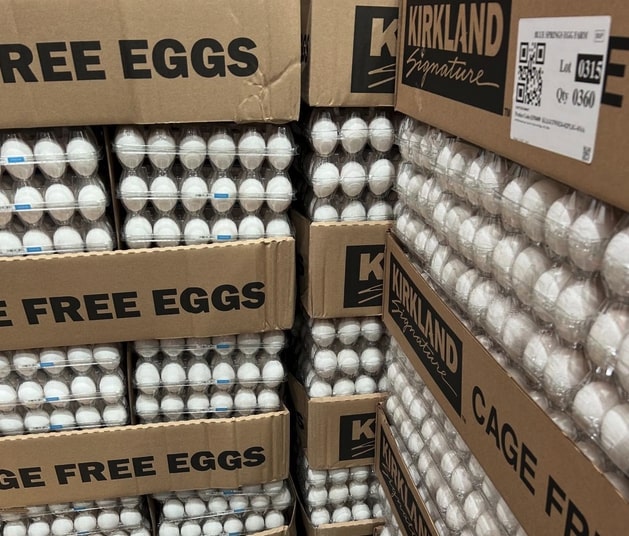Egg Costs Cut in Half: Market Analysis Reveals Reasons Behind the Plunge
Egg prices have plummeted, dropping by as much as 50% in some regions. This dramatic decrease has left consumers and industry experts alike scrambling to understand the forces behind this sudden shift in the market. This article dives into the key factors contributing to this significant price drop, offering a comprehensive market analysis and exploring the potential long-term implications.
The Great Egg Price Drop: What's Behind It?
The recent halving of egg costs isn't a random occurrence; it's the result of a confluence of factors impacting the supply and demand dynamics of the egg market. Let's break down the key contributors:
Increased Egg Production
-
Improved Avian Flu Situation: The devastating avian flu outbreaks of the past couple of years significantly impacted egg production, leading to shortages and inflated prices. However, the situation has improved considerably, resulting in a substantial increase in the number of egg-laying hens and, consequently, egg production.
-
Technological Advancements: Modern farming techniques and advancements in poultry management have boosted egg-laying efficiency, contributing to a larger overall supply. This includes improved feed formulations and better disease prevention measures.
-
Increased Farm Capacity: Many producers have expanded their operations, adding more laying hens to meet growing (and now, exceeding) consumer demand from previous years.
Shifting Consumer Demand
-
Economic Slowdown: With rising inflation impacting household budgets, consumers have become more price-sensitive, potentially reducing overall egg consumption in certain demographics. This decreased demand, combined with increased supply, naturally pushes prices downwards.
-
Substitute Proteins: The rise in popularity of alternative protein sources, such as plant-based eggs and meat substitutes, may be subtly affecting overall egg demand, although this factor is less impactful than the significant increase in supply.
Retail Competition and Market Dynamics
-
Increased Competition: Fierce competition among grocery stores and retailers has forced them to lower egg prices to attract customers, further driving down the overall market price. This price war benefits consumers but can squeeze profit margins for some producers.
-
Seasonal Fluctuations: While the current drop is significant, we must also consider seasonal variations in egg prices. Historically, egg prices tend to fluctuate throughout the year, and this current drop might, in part, reflect typical seasonal trends.
Long-Term Implications: A Sustainable Trend?
While the current situation offers consumers welcome relief, the question remains: is this a temporary dip or a sustainable long-term trend?
It's unlikely that egg prices will remain consistently at this drastically reduced level. While increased production and potentially reduced demand due to economic conditions are contributing factors, the market is dynamic. Factors like future avian flu outbreaks, feed costs, and unforeseen economic events could easily disrupt the current balance.
What Consumers Should Know
This price drop presents an excellent opportunity to take advantage of affordable eggs. However, it’s important to remember that prices are subject to change. Stockpiling is generally not recommended unless you have the proper storage facilities.
Conclusion: A Complex Market Picture
The dramatic decrease in egg prices is a complex issue stemming from a combination of factors. While consumers benefit from the affordability, industry experts need to carefully monitor the market dynamics to predict future trends. This situation underscores the interconnectedness of factors impacting food production, economic conditions, and consumer behavior.
Keywords: Egg prices, egg cost, market analysis, avian flu, egg production, consumer demand, retail competition, food prices, inflation, protein sources, seasonal fluctuations, agricultural market
(Note: This article would benefit from relevant data and statistics to support the claims made. Including charts and graphs would further enhance reader engagement and SEO.)
